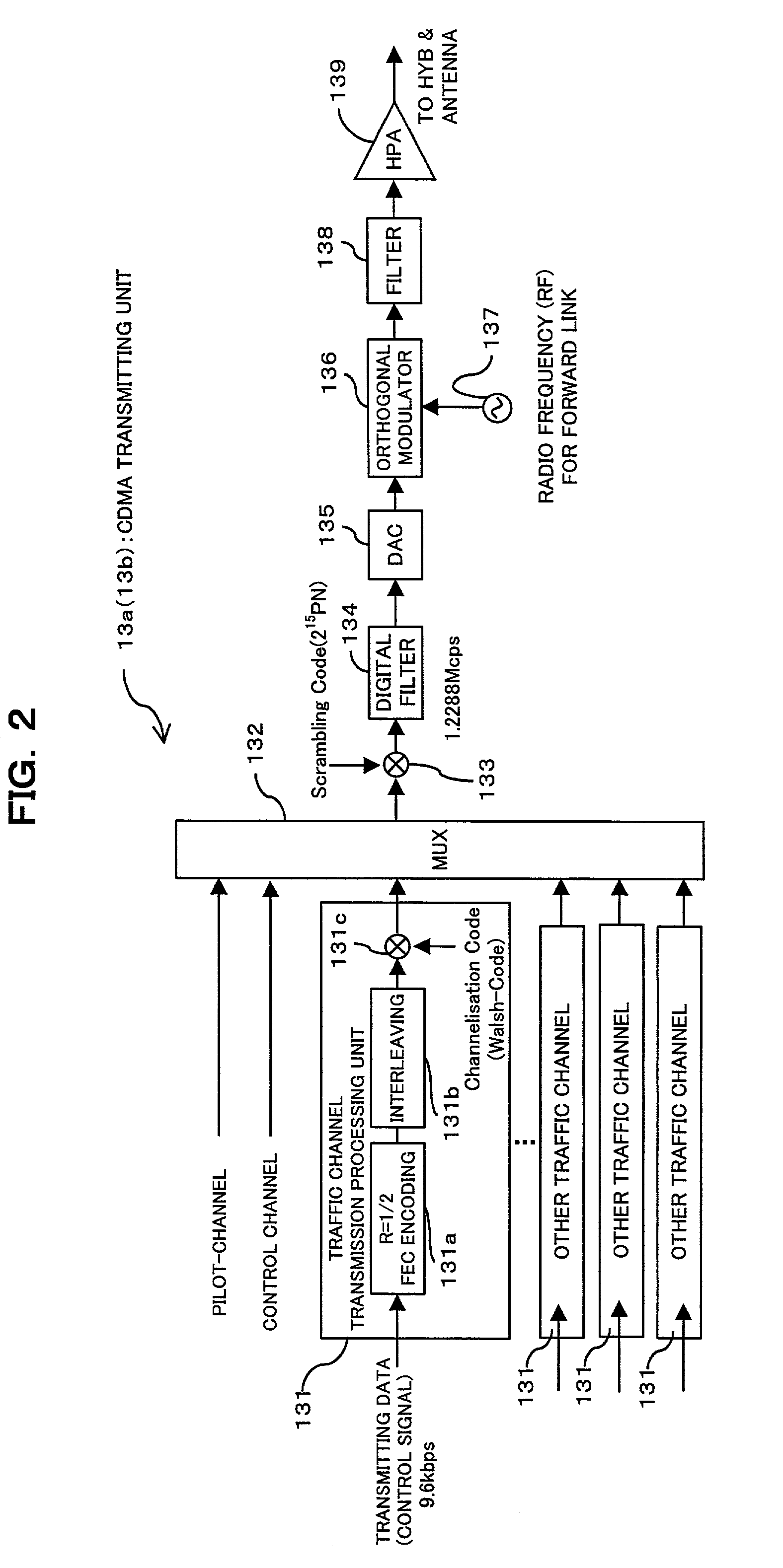Mobile communication system, and a radio base station, a radio apparatus and a mobile terminal
a mobile terminal and communication system technology, applied in the direction of wireless communication, radio transmission, transmission, etc., can solve the problems of cdma having a disadvantage of reducing the required eb/no at a specific terminal moving speed, affecting communication quality, and reducing channel capacity n
- Summary
- Abstract
- Description
- Claims
- Application Information
AI Technical Summary
Problems solved by technology
Method used
Image
Examples
first modification
[0142] (B) First Modification
[0143] In a radio propagation environment of a mobile communication system such as a CDMA communication system, there generates fluctuation (local median value fluctuation) in radio wave propagation loss due to shadowing or the like caused by a building or the like (refer to, for example, the above reference 3). Since the local median value fluctuation is log-normal fluctuation, the larger the local median value fluctuation standard deviation (.sigma. stm) of an interference wave from other cell, the more the other-cell interference ratio (fo) increases and the channel capacity decreases (for example, refer to references 4 and 5 below).
[0144] Reference 4: A. J. Viterbi and A. M. Viterbi, "Other-Cell Interference in Cellular Power-Controlled CDMA", IEEE Trans. On Commun., Vol. COM-42, No. 2 / 3 / 4, pp. 1501-1504, (1994).
[0145] Reference 5: A. J. Viterbi, et al., "Soft Handoff Extends CDMA Cell Coverage and Increases Reverse Link Capacity", IEEE J, Selected A...
second modification
[0153] (C) Second Modification
[0154] Local median value fluctuation standard deviation or multi-path interference changes according to operational environments of the system, installation conditions of the base station and the like. For this, values of the self(same)-cell interference ratio fs and the other-cell interference ratio fo may fluctuate according to operational conditions of the system, installation conditions of the base station or fluctuation in traffic with time.
[0155] This embodiment deals with fluctuation in (fs+fo) as this. When the above equation (2) is modified, the following equation (4) is given. 3 ( fs + fo )K .times. pg Eb / No .times. N ( 4 )
[0156] In the equation (4), N is the number of accommodated channels (ch / sector / FR), pg is a processing gain, Eb / No is an actual Eb / No, and K is a coefficient representing an effect of other parameters. Since K and pg are values determined when operational conditions of the system and the like are determined, it is possib...
PUM
 Login to View More
Login to View More Abstract
Description
Claims
Application Information
 Login to View More
Login to View More - R&D
- Intellectual Property
- Life Sciences
- Materials
- Tech Scout
- Unparalleled Data Quality
- Higher Quality Content
- 60% Fewer Hallucinations
Browse by: Latest US Patents, China's latest patents, Technical Efficacy Thesaurus, Application Domain, Technology Topic, Popular Technical Reports.
© 2025 PatSnap. All rights reserved.Legal|Privacy policy|Modern Slavery Act Transparency Statement|Sitemap|About US| Contact US: help@patsnap.com



